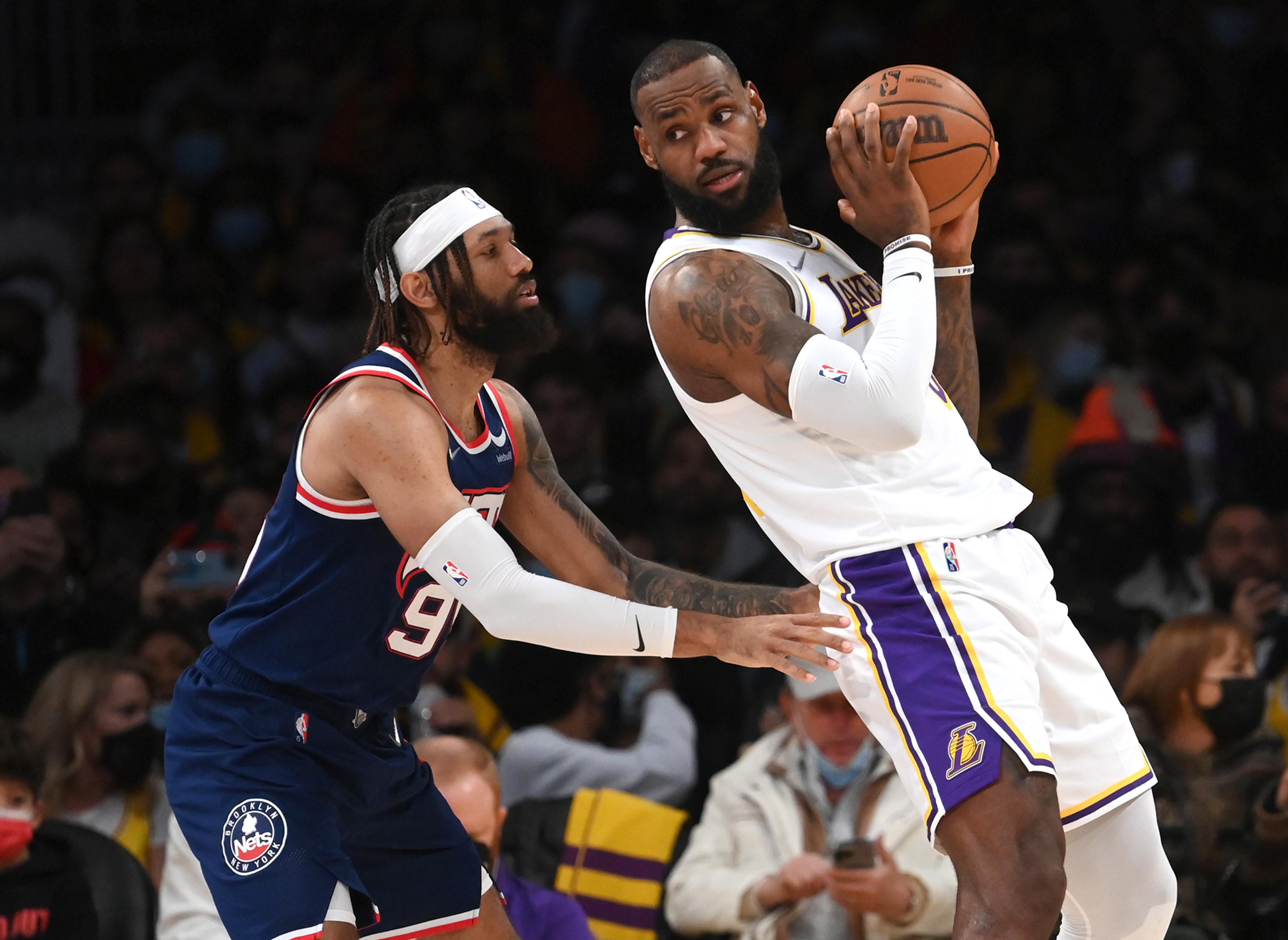
With almost half the season already behind them, the Lakers still haven’t figured out how to be a LeBron James team. It’s the damnedest thing; no superstar in the league comes with a clearer, more defined winning blueprint than LeBron, and yet nearly two decades of precedent hasn’t stopped the Lakers from constructing and running the kind of team that consistently works against its own best interests.
That was on full display in the Lakers’ Christmas Day showcase—a would-have-been statement game sapped of its stakes by the fact that the visiting Nets had seven players (including Kevin Durant and Kyrie Irving) out due to COVID protocols, and another key role player (Joe Harris) out with injury. Even a Lakers team working without Anthony Davis was at a decided situational advantage, and yet managed to lose anyway to drop their fifth straight game. A generous read would highlight the fact that the Lakers came back from 23 down in the fourth quarter to tie it in the final minute. A more honest read would underline the fact that they were down 23 in the fourth quarter to begin with, getting waxed not just by James Harden, but Patty Mills and, on occasion, the likes of Bruce Brown and DeAndre’ Bembry.
As has often been the case of late, the greatest indictment came from LeBron’s spectacular play. James dropped 39 points against the Nets on just 25 shots. He scored 36 the game prior, 34 in the preceding game, and 31 in the game before that. All were losses for the Lakers. “I’m kicking myself in the head because he’s giving an incredible effort,” acting head coach David Fizdale told reporters after the game. And yet no team James has played for has ever been outscored by this many points (76) over a five-game stretch, according to ESPN Stats and Info.
Accomplishing so little hasn’t prevented the Lakers from revealing plenty. LeBron has become something of a provisional center in AD’s absence, and on Saturday played up in position often enough for the Lakers to take Dwight Howard—their only healthy, rotation-worthy big—out of the mix entirely. It was a targeted play to contend with a smaller, more perimeter-oriented opponent, and LeBron bought in with gusto by cutting and rolling to the rim far more often than he typically would. It wasn’t enough. A team that waged its offseason in one long, defiant zag is now playing through the consequences—namely, that no matter how hard LeBron tries, his team isn’t built to adapt with him.
Historically, the great luxury of having James on your team was the freedom he allowed in adjustment. That he has the skill and size to score on almost anyone makes all sorts of things possible, and that he diagnoses (and solves) defenses more quickly than any player in NBA history turns pretty much every team he plays for into an instant contender. This group feels like a clear exception. All a team with LeBron James on its roster has to do to be playoff-viable is field the kind of roster versatile enough to roll with the opportunities he creates. So, naturally, the Lakers traded for one of the most inflexible and stylistically demanding players in the league back in July.
Russell Westbrook, for all his accomplishments, stands almost directly opposed to what a LeBron team could and should be. The reason James has to replace the Lakers’ more traditional bigs so often is because Westbrook is almost functionally a big himself—or at least opponents treat him like one. Brooklyn cheated off of and rotated away from him to fortify their defense whenever needed. Some other teams go so far as to guard Westbrook with a center outright. Yet because of his talent and pedigree, Westbrook still has the cachet to control the ball and to dictate course, hedging against the widening options that should be available to the Lakers through James. We can see this most clearly in what becomes of the supporting cast when LeBron and Russ share the floor. What separates James from other superstars, even now, is his ability to leverage his own advantages into even greater advantages for others. In the process, he makes every role player more dangerous. Yet sharing the floor with Westbrook—and all his complications—cuts against LeBron’s ability to turn getting his into broader prosperity. It devolves the Laker offense, rendering it either as Westbrook driving headlong toward the rim or setting up LeBron to work against a defense that, largely because of Westbrook’s unreliable jumper, can easily tilt against him. Most of the other Lakers wind up standing idly by, marginalized.
Some of those “other Lakers’’ are hardship replacements for already limited role players, exacerbating the problem. But it’s not a coincidence that the Lakers went on most of their big, game-tying run against the Nets without Westbrook on the floor. It’s also not a coincidence that he was brought back into the game anyway, just in time to miss an opportunity to kick out to James on what would be a crucial failed drive, and to ignore Patty Mills on the other end as he took an open 3-pointer from the corner to take back the lead. The Lakers have so many problems at this point that it can seem reductive at times to dwell too long on any one of them. Yet when a team with multiple MVPs ranks 20th in half-court offense and so much higher in side-eyed frustration, broadening out into too much nuance risks missing the point:
It didn’t have to be this hard.

